Symphyotrichum: The American Aster Genus
Happy Monday iNatters! Hopefully your weekend has left you refreshed, reinvigorated. This week, we noticed that our beloved asters are beginning to bloom in Cuyahoga Valley National Park. Asters are arguably one of our most precious fall wildflowers in Ohio.
To be clear, we are not talking about the entire Aster family, Asteraceae. We are talking about the American aster genus, * Symphyotrichum*. As a side note, you may know these species as members of the Aster genus. However, scientists have recently split Aster into multiple smaller genuses. The largest genus from these splits is our American aster genus, Symphyotrichum, which contains asters from both North and South America.
Ohio is home to about 30 American aster species, 13 of which have been documented in the park. In this post, we will go over identifying characteristics of our 5 most common American asters: New England aster (Symphyotrichum novae-angliae), common blue wood aster(Symphyotrichum cordifolium), calico aster (Symphyotrichum lateriflorum), smooth blue aster (Symphyotrichum laeve), and hairy white oldfield aster (Symphyotrichum pilosum).
American aster leaves get smaller from the base to the top of the plant and leaf shape can vary along the plant’s height. It’s important to note the size of the plant and to observe the leaves on the entire length of the plant! Additionally, American asters have composite flowers, meaning their flower heads are an amalgamation of many disk (reproductive flowers that make up the central circle of American aster flower heads) and ray flowers (the petal-looking flowers on the edges that attract pollinators). In this explanation, we will mention the color variations of both!
New England aster (Symphyotrichum novae-angliae):
You’ll find New England asters in fields, damp meadows, and shoreline habitat. They have hairy stems with alternately attached leaves. Leaves are lance-shaped and clasping (meaning the leaf base partially surrounds the stem). The inner yellow to golden disk florets are surrounded by those signature purple to deep violet ray florets we all know and love!

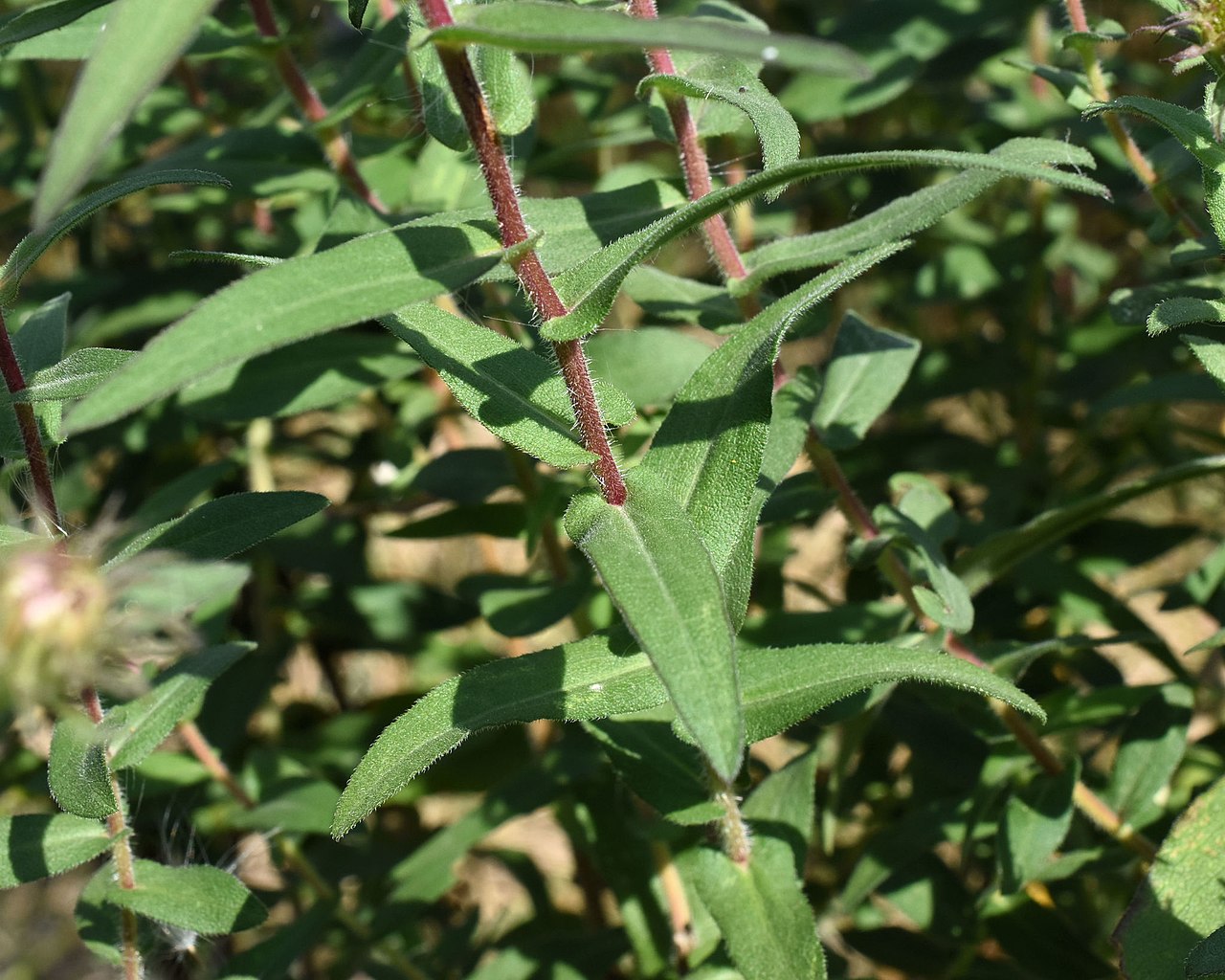
Credit: The Cosmonaut and davecz2, both courtesy Wikimedia Commons.
Common blue wood aster(Symphyotrichum cordifolium):
Common blue wood asters prefer to live in woods and thickets. Their stem is usually hairless but will sometimes have sparse white hairs. The stem is branching with alternately attached leaves. The lower leaves are heart-shaped or ovate with serrate edges and long leaf stalks. The upper leaves become more lance-shaped and the leaf stalk is less noticeable. The ray florets can be a light blue or light purple color. The central tubular disk florets start out a cream to yellow color and turn purple to magenta with age.
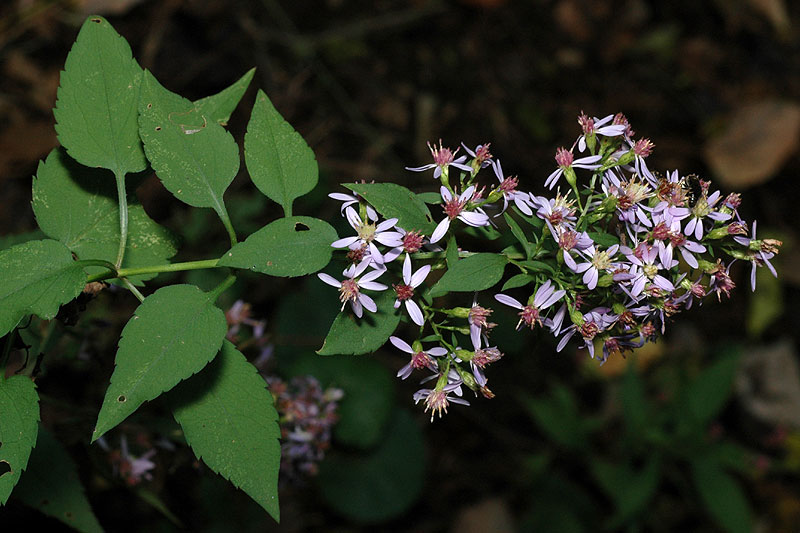
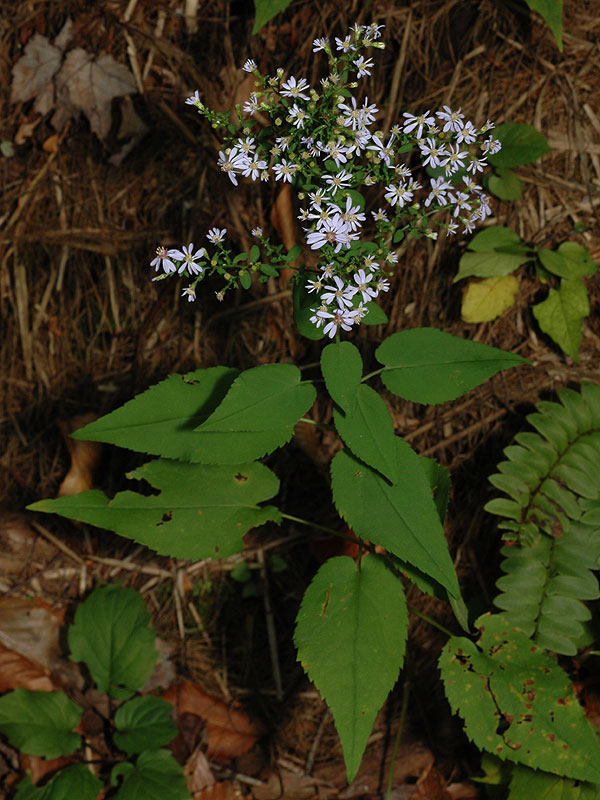
Credit: both David G. Smith, courtesy DelawareWildflowers.org
Calico aster (Symphyotrichum lateriflorum):
Calico asters can be found in field and edge habitat. This plant branches and often leans to one side. Its stem is green to red with white hairs. The alternately attached leaves are lance-shaped near the bottom of the plant with teeth in the middle of the leaf’s length. The leaves become more linear toward the top of the plant. The white ray florets surround the tubular disk florets that start out a pale yellow and become brown or magenta with age.


Credit: Thomas G. Barnes and Katy Chayka.
Smooth blue aster (Symphyotrichum laeve):
The smooth blue aster has a smooth and hairless stem with clasping, alternately attached leaves. The leaves are oblong-ovate in shape and get smaller as you ascend the plant. The leaf edges are often smooth but can sometimes be sparsely toothed. The ray florets on this plant can be light purple to light blue. The central disk florets will start out a pale-yellow color that fades to magenta and then brown over time. You’ll find smooth blue asters in dry fields and open woods.

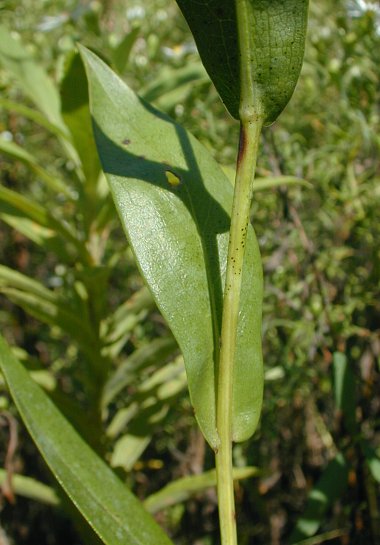
Credit: Arthur Haines, John Hilty, courtesy of Illinois WIldflowers
Hairy white oldfield aster (Symphyotrichum pilosum):
The Hairy white oldfield aster prefers field, meadow, and roadside habitat. Its leaves are alternately attached to its hairy stem. The lower stem, however, turns a reddish brown and loses hair with age. Its leaves are lanceolate-elliptic shaped (a leaf shape resembling two elongated parentheses next to each other). While the lower leaves sometimes have teeth near the tips, the upper leaves will have smooth margins. The white ray florets will surround yellow, magenta, or red-brown disk florets.
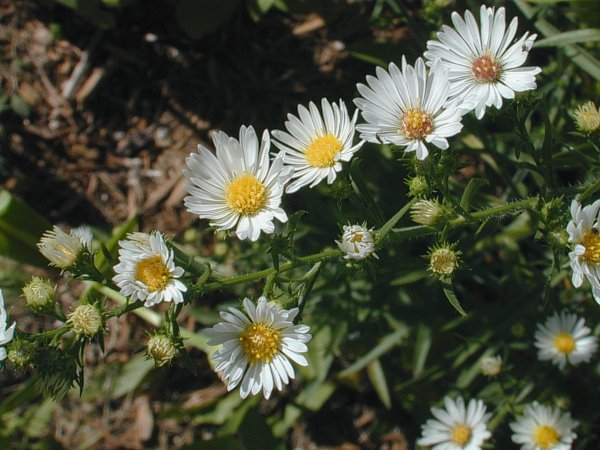

Credit: John Hilty, courtesy Illinois Wildflowers and Katy Chayka
If you have questions about American asters or notice a detail I’ve missed, please add it to the comments below! As always, I have used my Newcomb’s Wildflower Guide and John Hilty’s Illinois Wildflowers online guide for the above identification tips. Enjoy your fall aster hunting. I can’t wait to see all of your lovely observations!



Comments
Add a Comment